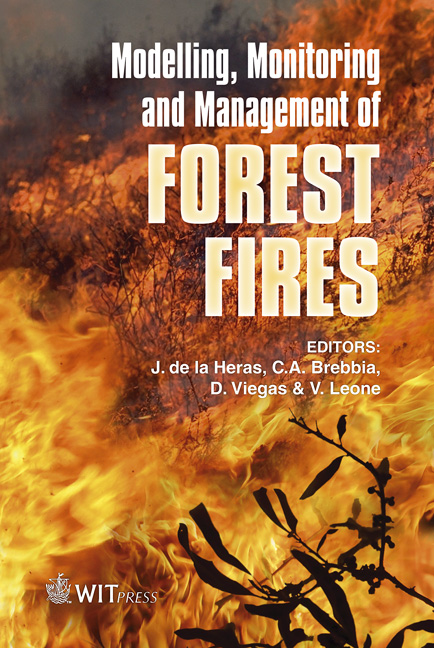Forest Fire Impacts On Buildings
Price
Free (open access)
Transaction
Volume
119
Pages
7
Page Range
237 - 243
Published
2008
Size
376 kb
Paper DOI
10.2495/FIVA080241
Copyright
WIT Press
Author(s)
E. Mikkola
Abstract
Buildings and built areas may suffer from severe damage caused by forest and wild land fires. For the safety of people and the reduction of property losses it is important to be prepared by use of proper building construction and materials in potential areas of forest fires. This paper summarises the key factors to be taken into account when considering the impacts of forest fires on buildings: conditions caused by forest fires, impact mechanisms and the response of buildings and building materials. Keywords: forest fire, buildings, ignition, heat transfer, simulation. 1 Introduction Forest and wild land fires do not only burn down forests but also have serious impacts on buildings and infrastructures as well as endangering the safety of people. Many fires also occur in the wild land urban interfaces because human activities are the most common causes of forest fires. In principle, there are three heat transfer mechanisms than can cause the ignition of buildings: radiation from the flames, convection of hot gases and spotting, i.e. transport of hot particles and firebrands. In an on-going project FIRE PARADOX [1] these mechanisms are being studied. These studies include, for example, the prediction of fire conditions at targets and the modelling of ignition or damage to building materials. Predictions of radiative heat fluxes and temperatures at target are being analysed as well as the transportation of firebrands. Key parameters are the fire front parameters (such as fire front height, depth and width, fire front intensity (MW/unit area)), distance to target, wind speed and target properties (such as materials exposed, openings/ventilation, etc.).
Keywords
forest fire, buildings, ignition, heat transfer, simulation.





